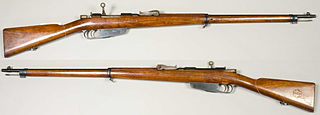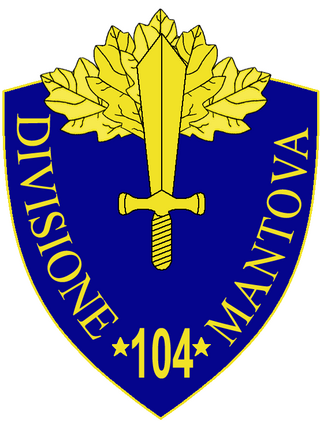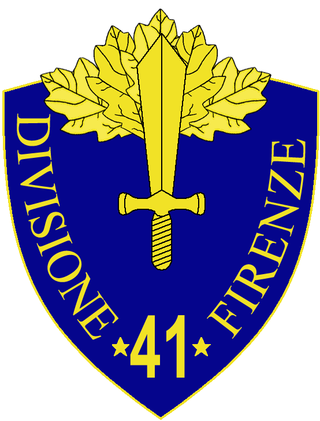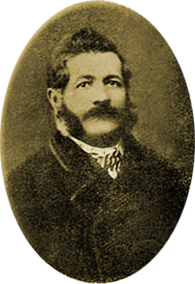Biography
He was born near the industrialized city of Varese in the then-Austrian Lombardo-Veneto, in a family of modest income. He enlisted as a volunteer in the Lombard artillery in April 1848 during the First Italian War of Independence, after the Austrian victory he fled to Piedmont and was admitted into the Sardinian artillery as "Cadet gunsmith". When his enlistment expired in 1852 he was immediately employed by the Royal Arms Factory in Turin, quickly rising through the ranks. His work (including machinery designed by him for precision working of rifle parts), contributing to Piedmontese effort to prepare for the Crimean War, earned him a medal and a diploma in 1858.
After travelling in France and Switzerland from 1862 to 1863 to acquire and inspect machinery, in 1868 he was involved in the design of a new breech-loading rifle for the Regio Esercito, who was looking to convert its existing stocks of the muzzle-loader Fucile Mod. 1860 into a needle gun, being unable to design and build from scratch a new gun due to financial reasons; Carcano applied to the Doersch-Baumgarten bolt the security of the Dreyse, with satisfying results. The resulting Fucile Mod. 1867 was thus adopted by the Italian army, till its substitution with the M1870 Italian Vetterli.
Most notably, he gave the decisive contribution for the realization of the Fucile Modello 1891 ("the ninety-one", as commonly known in Italy); he coupled his own bolt design, derived from that of the Mod. 1867, to the Mannlicher-type charger clip. His accomplishment earned him a sum of money and the title of knight of the Order of Saints Maurice and Lazarus.
He retired in 1896, and died in Turin in 1903.

Carcano is the frequently used name for a series of Italian bolt-action, internal box magazine fed, repeating military rifles and carbines. Introduced in 1891, the rifle was chambered for the rimless 6.5×52mm Carcano round. It was developed by the chief technician Salvatore Carcano at the Turin Army Arsenal in 1890, and was originally called the Modello (model) 91 or simply M91. Successively replacing the previous Vetterli-Vitali rifles and carbines in 10.35×47mmR, it was produced from 1891 to 1945. The M91 was used in both rifle (fucile) and shorter-barreled carbine (moschetto) form by most Italian troops during World War I and by Italian and some German forces during World War II. The rifle was also used during the Winter War by Finland, and again by regular and irregular forces in Syria, Libya, Tunisia, and Algeria during various postwar conflicts in those countries.

The 6.5×52mm Carcano, also known as the 6.5×52mm Parravicini–Carcano or 6.5×52mm Mannlicher–Carcano, is an Italian military 6.5 mm rimless bottle-necked rifle cartridge, developed from 1889 to 1891 and used in the Carcano 1891 rifle and many of its successors. A common synonym in American gun literature is "6.5mm Italian." In American parlance, "Carcano" is frequently added to better distinguish it from the rimmed hunting cartridge 6.5×52mmR. Ballistically, its performance is very similar to that of the 6.5×54mm Mannlicher–Schönauer.

The 4th CC.NN. Division "3 Gennaio" was an Italian CC.NN. division raised on 25 June 1935 for the Second Italo-Ethiopian War against Ethiopia. The name "3 Gennaio" was chosen to commemorate the date of assumption of dictatorial powers by Benito Mussolini on 3 January 1925. The division took part in the Italian invasion of Egypt and was destroyed during the Battle of Sidi Barrani in December 1940.

The M1870 Vetterli was a Swiss rifle and was the Italian service rifle from 1870 to 1891. In 1887, it would be modified into the repeating M1870/87 Italian Vetterli-Vitali variant. The Vetterli rifle used the 10.4mm Vetterli centrefire cartridge, at first loaded with black powder and later with smokeless powder. Some Vetterli rifles would later be converted into 6.5×52mm Carcano during World War I. Despite being supplanted by the Carcano rifle, it continued to see use in Italian service and abroad.

The 1st Infantry Division "Superga" was an infantry division of the Royal Italian Army during World War II. The Superga was classified as a mountain infantry division, which meant that the division's artillery was moved by pack mules instead of the horse-drawn carriages of line infantry divisions. Italy's real mountain warfare divisions were the six alpine divisions manned by Alpini mountain troops. The Superga recruited primarily from central Piedmont and was based, together with its two infantry regiments, in Turin, while the 5th Artillery Regiment was based in Venaria Reale. The division was and named for the Superga hill near Turin, where members of Italy's Royal House of Savoy were buried in the Basilica of Superga.

The 2nd Cavalry Division "Emanuele Filiberto Testa di Ferro" was a cavalry or "Celere" (Fast) division of the Royal Italian Army during World War II. The division was mobilised in 1940. It did not take part in the Italian invasion of France, but did serve in the Invasion of Yugoslavia and remained in Yugoslavia as part of the occupying forces. In March 1942 the division's 6th Bersaglieri Regiment was sent to the Soviet Union attached to the 3rd Cavalry Division "Principe Amedeo Duca d'Aosta". In May 1942 the division started converting to an armored division, however, the conversion was cancelled and it returned to the cavalry format. In December 1942, the division moved to France as part of the Italian occupying forces where it was based in Toulon. The division remained in France until the Armistice of Cassibile was announced on 8 September 1943 and was then disbanded by the invading Germans.

The 104th Infantry Division "Mantova" was an infantry division of the Royal Italian Army during the Second World War. The Mantova was named for the city of Mantua and classified as an auto-transportable division, meaning it had some motorized transport, but not enough to move the entire division at once.

The 105th Infantry Division "Rovigo" was an infantry division of the Royal Italian Army during World War II. The Rovigo was named for the city of Rovigo and classified as an auto-transportable division, meaning it had some motorized transport, but not enough to move the entire division at once.

The 14th Infantry Division "Isonzo" was an infantry division of the Royal Italian Army during World War II. The division was based in Friuli and named for the river Isonzo, along which Italy and Austria-Hungary had fought twelve battles during World War I.

The 41st Infantry Division "Firenze" was an infantry division of the Royal Italian Army during World War II. The Firenze was formed on 15 September 1939 in Florence and named for the city. The division recruited primarily in Tuscany. After the announcement of the Armistice of Cassibile on 8 September 1943 the division resisted German attempts to disbanded it and on 28 September 1943 the division dissolved itself and formed partisan formations, which joined the Albanian National Liberation Army.

The 59th Infantry Division "Cagliari" was a infantry division of the Royal Italian Army during World War II. The Cagliari was classified as a mountain infantry division, which meant that the division's artillery was moved by pack mules instead of the horse-drawn carriages of line infantry divisions. Italy's real mountain warfare divisions were the six alpine divisions manned by Alpini mountain troops.

The 44th Infantry Division "Cremona" was an infantry division of the Royal Italian Army during World War II. The Cremona was formed on 15 September 1939 by splitting the 20th Infantry Division "Curtatone and Montanara" into the 20th Infantry Division "Friuli" and 44th Infantry Division "Cremona". The division was named for the city of Cremona. The division served as occupation force on Corsica and fought German units after the Armistice of Cassibile was announced on 8 September 1943. The division then served with the Italian Co-belligerent Army and remained active until the 1975 Italian Army reform.
The 226th Coastal Division was an infantry division of the Royal Italian Army during World War II. Royal Italian Army coastal divisions were second line divisions formed with reservists and equipped with second rate materiel. They were often commanded by officers called out of retirement.

The 159th Infantry Division "Veneto" was an infantry division of the Royal Italian Army during World War II. The Veneto was formed on 1 March 1942 and named for the Veneto region. The Veneto was classified as an occupation infantry division, which meant, that the division's artillery regiment consisted of two artillery groups instead of the three artillery groups of line infantry divisions and that the divisional mortar battalion was replaced by a divisional machine gun battalion. On 1 June 1943 the Veneto was disbanded and its units used to reform the 52nd Infantry Division "Torino".

The 57th Infantry Division "Lombardia" was an infantry division of the Royal Italian Army during World War II. The Lombardia was formed on 24 May 1939 in Pula and named for the region of Lombardy. The division was disbanded by the Germans after the Armistice of Cassibile was announced on 8 September 1943.

The 156th Infantry Division "Vicenza" was an infantry division of the Royal Italian Army during World War II. The Vicenza was formed on 10 March 1942 and named for the city of Vicenza. The Vicenza was classified as an occupation infantry division, which meant that the division's artillery regiment consisted of two artillery groups instead of the three artillery groups of line infantry divisions and that the divisional mortar battalion was replaced by a divisional machine gun battalion. The division was sent to the Eastern front, as part of the Italian Army in Russia. The division guarded the army's line of communications and rear area against Soviet partisans.
A needle gun is a firearm that has a needle-like firing pin, which can pass through the paper cartridge case to strike a percussion cap at the bullet base.
The 6.5×53mmR, originally and more correctly produced as the 6.5×53.5mmR, and in imperial system nomenclature known as the .256 Mannlicher, is a late 19th-century rimmed centerfire military rifle cartridge similar to other early smokeless powder designs.















